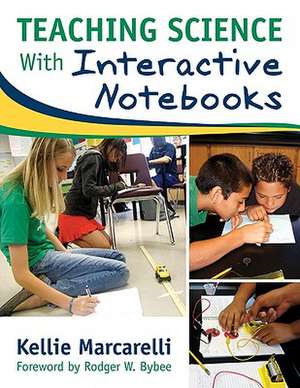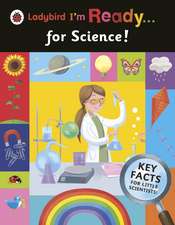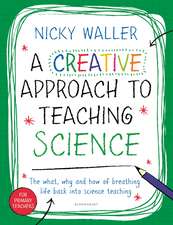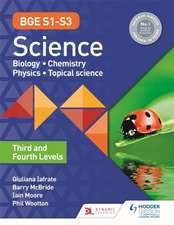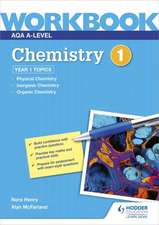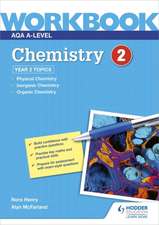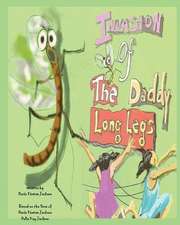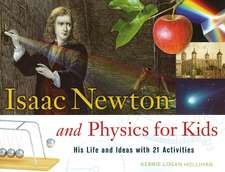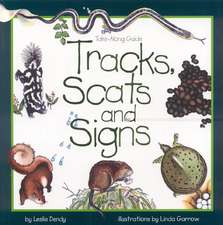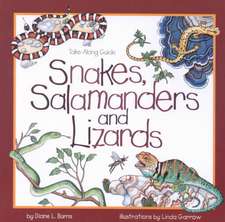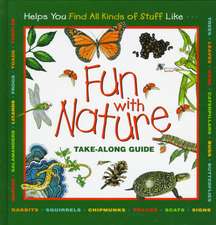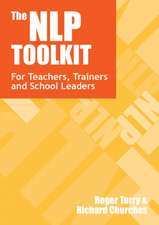Teaching Science With Interactive Notebooks
Editat de Kellie Marcarellien Limba Engleză Paperback – 9 aug 2010
This book can enrich learning in any science classroom and supports the effort to make students the owners of their own learning. Interactive notebooks are natural differentiators that allow students to learn standards-based content and demonstrate that learning in individualized ways.
Preț: 300.27 lei
Nou
Puncte Express: 450
Preț estimativ în valută:
57.46€ • 60.15$ • 47.54£
57.46€ • 60.15$ • 47.54£
Carte tipărită la comandă
Livrare economică 07-21 aprilie
Preluare comenzi: 021 569.72.76
Specificații
ISBN-13: 9781412954037
ISBN-10: 1412954037
Pagini: 192
Ilustrații: Illustrations
Dimensiuni: 216 x 279 x 12 mm
Greutate: 0.54 kg
Ediția:1
Editura: SAGE Publications
Colecția Corwin
Locul publicării:Thousand Oaks, United States
ISBN-10: 1412954037
Pagini: 192
Ilustrații: Illustrations
Dimensiuni: 216 x 279 x 12 mm
Greutate: 0.54 kg
Ediția:1
Editura: SAGE Publications
Colecția Corwin
Locul publicării:Thousand Oaks, United States
Recenzii
“Teaching Science With Interactive Notebooks provides teacher-friendly, practical advice for strategies that all science teachers can use.”
"Highly recommend this book to science teachers who want to do science notebooks but fear the drudgery that sometimes is associated with them. The interactive notebooks that Marcarelli creates not only are interesting for the teacher but also fun and motivating for students."
"Marcarelli’s book provides teachers with research-based strategies that actively engage students in their own learning. With interactive notebooks, students learn how to collect and organize scientific information and how to communicate and refine their thinking. Moreover, students take ownership and pride in their work. This book is a valuable tool that every science teacher should have.
"A powerful reference that will be full of my sticky notes and used daily."
“In an era when science teachers are being asked more and more to teach writing skills and build science literacy, this book presents an engaging and creative way to answer that challenge and encourage the use of higher-order thinking skills.”
"Whether they are doing hands-on investigation, synthesizing a piece of text, or researching online, my students do the work of scientists by creating something every day in their science notebooks. The notebooks are veritable portfolios of their thinking. My students take pride in collecting daily evidence of their work and are better able to organize, focus, and reflect on their learning in the notebook spread. Because I am planning with the notebook in mind, my lessons are clearer and the structure allows us to focus on the learning at hand. I can’t imagine not using them. This is not rocket science, just good teaching!”
“Easy to read, with good examples and illustrations. The rationale is spelled out for every step, the setup for the interactive notebook is clearly explained, and you can hear the enthusiasm of the author, which makes the reader enthusiastic about trying the strategy.”
"Interactive notebooks are awesome. This book gives you step-by-step instructions on what they are, their many uses, and day to day instructions on getting them up and running smoothly in your classroom."
"Highly recommend this book to science teachers who want to do science notebooks but fear the drudgery that sometimes is associated with them. The interactive notebooks that Marcarelli creates not only are interesting for the teacher but also fun and motivating for students."
"Marcarelli’s book provides teachers with research-based strategies that actively engage students in their own learning. With interactive notebooks, students learn how to collect and organize scientific information and how to communicate and refine their thinking. Moreover, students take ownership and pride in their work. This book is a valuable tool that every science teacher should have.
"A powerful reference that will be full of my sticky notes and used daily."
“In an era when science teachers are being asked more and more to teach writing skills and build science literacy, this book presents an engaging and creative way to answer that challenge and encourage the use of higher-order thinking skills.”
"Whether they are doing hands-on investigation, synthesizing a piece of text, or researching online, my students do the work of scientists by creating something every day in their science notebooks. The notebooks are veritable portfolios of their thinking. My students take pride in collecting daily evidence of their work and are better able to organize, focus, and reflect on their learning in the notebook spread. Because I am planning with the notebook in mind, my lessons are clearer and the structure allows us to focus on the learning at hand. I can’t imagine not using them. This is not rocket science, just good teaching!”
“Easy to read, with good examples and illustrations. The rationale is spelled out for every step, the setup for the interactive notebook is clearly explained, and you can hear the enthusiasm of the author, which makes the reader enthusiastic about trying the strategy.”
"Interactive notebooks are awesome. This book gives you step-by-step instructions on what they are, their many uses, and day to day instructions on getting them up and running smoothly in your classroom."
Cuprins
Foreword
Preface
Acknowledgments
About the Author
1. Introduction
2. Organizing Notebooks for Learning
3. Gaining Student Buy In and Ownership
4. Using Notebooks During Investigations
5. Getting Started: The First Three Days
6. Using the Notebooks: Days Four to Seven
7. Learning Through Writing
8. Learning Through Discussion
9. Conclusion
Resource A: Reproducibles
Resource B: Crosscurricular Connections
References and Further Reading
Index
Preface
Acknowledgments
About the Author
1. Introduction
2. Organizing Notebooks for Learning
3. Gaining Student Buy In and Ownership
4. Using Notebooks During Investigations
5. Getting Started: The First Three Days
6. Using the Notebooks: Days Four to Seven
7. Learning Through Writing
8. Learning Through Discussion
9. Conclusion
Resource A: Reproducibles
Resource B: Crosscurricular Connections
References and Further Reading
Index
Descriere
Teaching Science With Interactive Notebooks gives science teachers everything they need to incorporate interactive notebooks into classroom teaching and learning.
